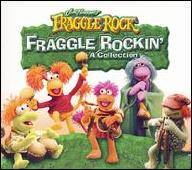Jim Henson
from Greenville, MS
September 24, 1936 - May 16, 1990 (age 53)
Biography
As virtually anyone remotely familiar with American television knows, Jim Henson was the most popular children's entertainer of the 20th century, a gentle genius and master puppeteer who pulled off the rare feat of appealing to both children and adults with his combination of innocence and sly wit. Led by Kermit the Frog (one of his earliest characters), Henson's beloved creations, the Muppets, populated two smash-hit television programs -- the educational children's show #Sesame Street (1970-present) and the syndicated variety show #The Muppet Show (1976-1981) -- as well as a number of feature films, TV specials, and spin-off recordings. Henson's shockingly sudden death at age 53 robbed the world of a great creative spirit whose childlike enthusiasm for life served as perhaps his greatest legacy. James Maury Henson was born September 24, 1936, in Greenville, MS, and raised in nearby Leland, where his father worked for the Department of Agriculture. When young Jim was in fifth grade, the family was reassigned to the D.C. suburb of Hyattsville, MD; this allowed Henson to spend more time with his maternal grandmother, who was responsible not only for teaching him needlework and sculpture -- skills that would later prove crucial -- but also for encouraging his budding imagination. While in high school, Henson became fascinated with television, theater, and puppetry, and in one class demonstrated that by focusing only on a puppet's upper half, television cameras could allow much greater freedom of movement than the traditional stage provided. During his senior year in 1954, Henson and his brother, Paul, performed as puppeteers on a Saturday morning children's television show on local station WTOP, marking the public debut of the Muppets. Later that fall, Henson enrolled at the University of Maryland where he began taking studio art classes in hopes of becoming a commercial artist. His puppetry class would prove more important, however; not only was he back on local television in a matter of months, but he also met performing partner Jane Nebel, who would become his wife in 1959. Henson was given his own five-minute show on the local NBC affiliate WRC; #Sam and Friends aired live twice a day, and in 1955 saw the first televised appearance of Kermit the Frog. Not only would Kermit grow to become Henson's flagship character, but his design was revolutionary for the time: his face was built of softer material than most puppets, allowing for greater expressiveness and nuance, and his limbs were moved with rods instead of marionette strings, which increased the range and precision of the puppet's gestures. All of this worked very smoothly with the new medium of television and its close-up views, and by the time Henson graduated from college in 1960, his characters were appearing on nationally televised variety shows (Steve Allen, Jack Paar, etc.) and the #Today show, as well as in advertisements for a variety of clients. In 1961, Henson's company hired writer/puppeteer Jerry Juhl, who would collaborate with Henson for decades, and ceased production of #Sam and Friends. Henson realized he had something potentially big on his hands and relocated to the media capital of New York City in 1963. There, he hired two future mainstays, puppet builder Don Sahlin and puppeteer/voice talent Frank Oznowicz, who became better-known as Frank Oz. The new location allowed Henson to begin making weekly appearances on #Today, and his company was contacted by singer and Western star Jimmy Dean, who wanted to add a Henson character to his own series. Thus it was not Kermit the Frog, but the Henson/Sahlin/Oz creation Rowlf -- the brown, floppy-eared, piano-playing, gravel-voiced dog -- who became the first Muppet to achieve national fame, appearing on #The Jimmy Dean Show from 1963-1966. Henson's company was doing quite well financially, which allowed him the freedom to experiment in the area of filmmaking. During the '60s, he made several experimental short films which helped increase his technical abilities; the first, 1964's #Timepiece, was even nominated for an Academy Award. His biggest break, however, came in 1969, when he was contacted by public TV producer Joan Ganz Cooney of the Children's Television Workshop, regarding a new educational series she was creating called #Sesame Street. Cooney invited Henson to create a cast of Muppet characters who would appeal to very young children and provide the show's main focus, while interacting with a supporting human cast. Henson creations like Oscar the Grouch, Bert and Ernie, Grover and Cookie Monster (two of the show's many lovable monsters), the Count, and of course the show's unofficial mascot, Big Bird, debuted in 1970; they became not just an Emmy-winning worldwide success, but pop-cultural icons, and perhaps the most consistently effective argument in favor of the whole concept of public television. Riding high on his success, Henson produced two feature-length, prime-time TV specials involving the Muppets: a 1971 retelling of #The Frog Prince and 1972's #The Muppet Musicians of Bremen. However, despite Henson's proven appeal, as well as ratings evidence that the specials' audiences were mostly adult, U.S. network executives continually refused Henson's idea for a Muppet-driven variety show that would appeal to all ages but be geared toward adults. For three years, it looked as though Henson's fears of being pigeonholed over #Sesame Street were justified. Finally, though, in 1975 -- shortly after an aborted first-season collaboration with #Saturday Night Live -- London producer Lord Lew Grade took a chance on Henson's concept and #The Muppet Show was born. Debuting in syndication in 1976, #The Muppet Show wasn't an immediate hit, but once word of the show's witty sketches and its array of guest stars got around, it ended up becoming the most watched comedy show in the world, airing in over 100 countries. Another challenge awaited Henson: the big screen. Once again, the same doubts about his characters' adaptability to a new format surfaced, and once again, Henson proved himself unequivocally. #The Muppet Movie, released in 1979, became a smash hit among audiences of all ages and earned Academy Award nominations for Best Score and Best Song (The Rainbow Connection) With the Muppets now having conquered the whole of the entertainment world, Henson retired #The Muppet Show in 1981 to concentrate on new projects. A sequel to #The Muppet Movie, #The Great Muppet Caper, was released, this time with Henson in the director's chair. However, his consuming passion was for a darker, more serious fantasy film being produced in collaboration with artist Brian Froud. Released in 1982, #The Dark Crystal introduced dazzling new effects and advances in the field of animatronic puppetry, serving notice that Henson's Creature Shop studio was on the cutting edge of those fields (it had already designed the Frank Oz-voiced Yoda for #The Empire Strikes Back). However, it was not a hit with moviegoers, who hadn't expected this sort of a detour from the man behind the Muppets. Undaunted, Henson created another children's series, this one for pay-cable channel HBO; #Fraggle Rock debuted in 1983, the year before the third and final Muppet film to be completed in Henson's lifetime, #The Muppets Take Manhattan. Also in 1984, the Saturday morning cartoon #Jim Henson's Muppet Babies debuted and in 1986, Henson embarked on another film collaboration with Brian Froud, #Labyrinth, which starred David Bowie. From 1987 to 1989, Henson produced the TV series #Jim Henson's Storytellers, which combined classic folk tales with technical effects from the Creature Shop. All of that is to say that the '80s were an extraordinarily busy decade for Henson. His myriad projects and passion for technical and design advances left him unable to spend as much time as he would have liked with his five children, but they also took their toll on his health. In May 1990, Henson contracted what he assumed was a case of the flu; however, when he began having trouble breathing, his wife convinced him to go to the hospital. Henson's illness was not the flu, but an extremely rare -- and aggressive -- strain of bacterial pneumonia. Antibiotic treatment failed, and on May 16, less than 24 hours after entering the hospital, Jim Henson was dead. A shocked nation mourned the loss of one of its best-loved entertainers, but Henson's spirit lives on in his creations and characters, the products of one of the most fertile imaginations of the 20th century. ~ Steve Huey, Rovi
Top Tracks
Albums
Videos
Close













